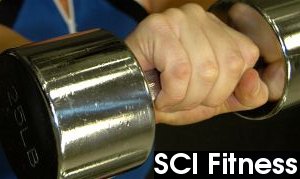Exercise Duality
 orkouts as opposed to diet are responsible for tearing muscle tissue, preparing the body to adapt to future strenuous exercise by building up more muscle tissue. The body is adaptable in the sense that it prioritises allocation of resources (matter and energy) based on one’s lifestyle. In order to instruct the body to gain strength, the natural solution (no doping) is to make the body expect regular exercise of a particular type. Depending on the type of exercise one chooses, the muscles will be built from one’s pertinent amino acids acquired through nutrition. The diet and the exercise are inter-dependent in the sense that particular types of exercise (short but high intensity) typically result in greater muscle bulk, which then requires a lot of protein. Nutrition is a separate subject, however, and it complements one’s choice of workout. Improper choice of foods given a particular body and exercise type can result in obesity; conversely, improper choice of exercise given one’s culinary lifestyle can result in lack of progress (e.g. stamina, strength).
orkouts as opposed to diet are responsible for tearing muscle tissue, preparing the body to adapt to future strenuous exercise by building up more muscle tissue. The body is adaptable in the sense that it prioritises allocation of resources (matter and energy) based on one’s lifestyle. In order to instruct the body to gain strength, the natural solution (no doping) is to make the body expect regular exercise of a particular type. Depending on the type of exercise one chooses, the muscles will be built from one’s pertinent amino acids acquired through nutrition. The diet and the exercise are inter-dependent in the sense that particular types of exercise (short but high intensity) typically result in greater muscle bulk, which then requires a lot of protein. Nutrition is a separate subject, however, and it complements one’s choice of workout. Improper choice of foods given a particular body and exercise type can result in obesity; conversely, improper choice of exercise given one’s culinary lifestyle can result in lack of progress (e.g. stamina, strength).
Broadly speaking, exercise which is long and constant improves endurance, which makes muscles lighter and capable of delivering power for lengthy continuous periods, i.e. no intervals, whereas short, high-intensity workout (like set compromising about 10 repetitions) trains the muscles for delivering big bursts of power. Some favour the former type of exercise because it leads to leaner and more athletic figures while the latter provides bulk, size, weight, and strength. The former is likely to burn more calories (within a given and fixed time period) than the latter.





